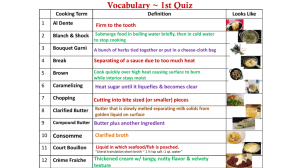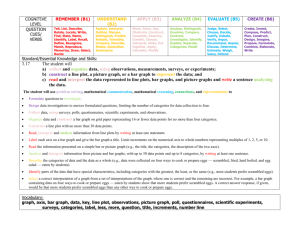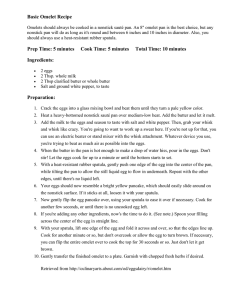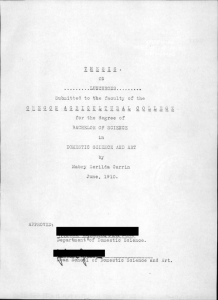Data Collection and Graph
advertisement
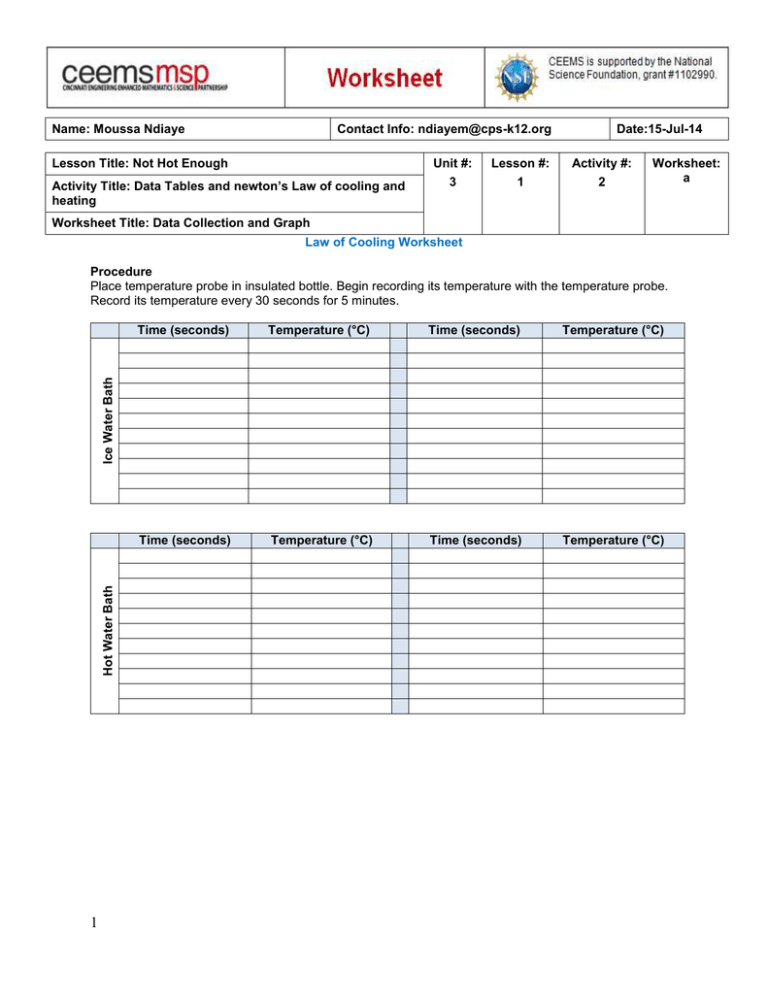
Name: Moussa Ndiaye Contact Info: ndiayem@cps-k12.org Lesson Title: Not Hot Enough Activity Title: Data Tables and newton’s Law of cooling and heating Unit #: 3 Lesson #: 1 Date:15-Jul-14 Activity #: 2 Worksheet: a Worksheet Title: Data Collection and Graph Law of Cooling Worksheet Procedure Place temperature probe in insulated bottle. Begin recording its temperature with the temperature probe. Record its temperature every 30 seconds for 5 minutes. Temperature (°C) Time (seconds) Temperature (°C) Time (seconds) Temperature (°C) Time (seconds) Temperature (°C) Hot Water Bath Ice Water Bath Time (seconds) 1 Analysis Plot your results on the graph below. 2 3 Questions 1. What do you expect the temperature to be at 360 seconds? At 900 seconds? 2. Will the water in the bottle ever be 0º Celsius? Why? 4 Solve the separable equation dT k (T Tr ) and obtain a general solution. dt 3. Use the data at time t=0 and t= 5 min (300 second) to find the particular solution for this experiment (Solve for k and C. Tr = room temp) 4. Compute the temperatures at time t = 6 by using your particular solution that you just found. 5. Compute the percent difference between the measured temperature and computed temperature at t= 10 minutes. This is (measured - computed)/measured X 100% 6. Explain why the measured temperature was different from the computed temperature. 7. Using the particular solution, predict the time it will take for the temperature in the bottle to be 1 degree higher than the room temperature. 8. Discuss ways in which your insulation could be made more efficient in holding in heat. 5 Homework 9. You are an industrial engineer designing a factory to make cookies. You need to design a process to add melted butter to eggs, but you do not want the hot butter to cook the eggs. Butter starts to melt and eggs start to cook around at ~95 ºFahrenheit, so if you add a lot of melted butter to the eggs, their temperature rises and they will cook before they make it to the cookie dough! As an engineer, apply what you learned to come up with a solution for your client. Describe a general idea for how to add a gallon of butter to a gallon of eggs without the eggs getting too hot. What kind of sensors would you need in the system to make sure the eggs did not cook from the butter? (Write approximately one paragraph.) 10. Describe two other possible situations in which engineers might apply their understanding of heat transfer. 6

